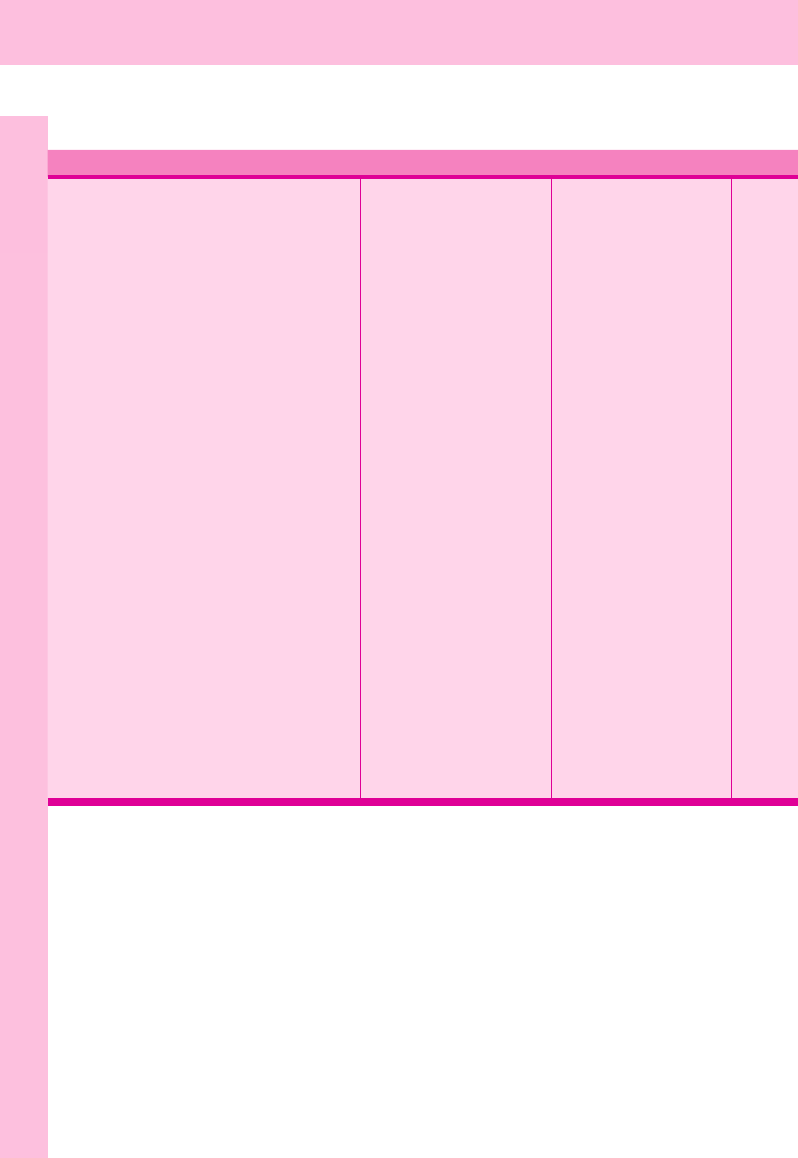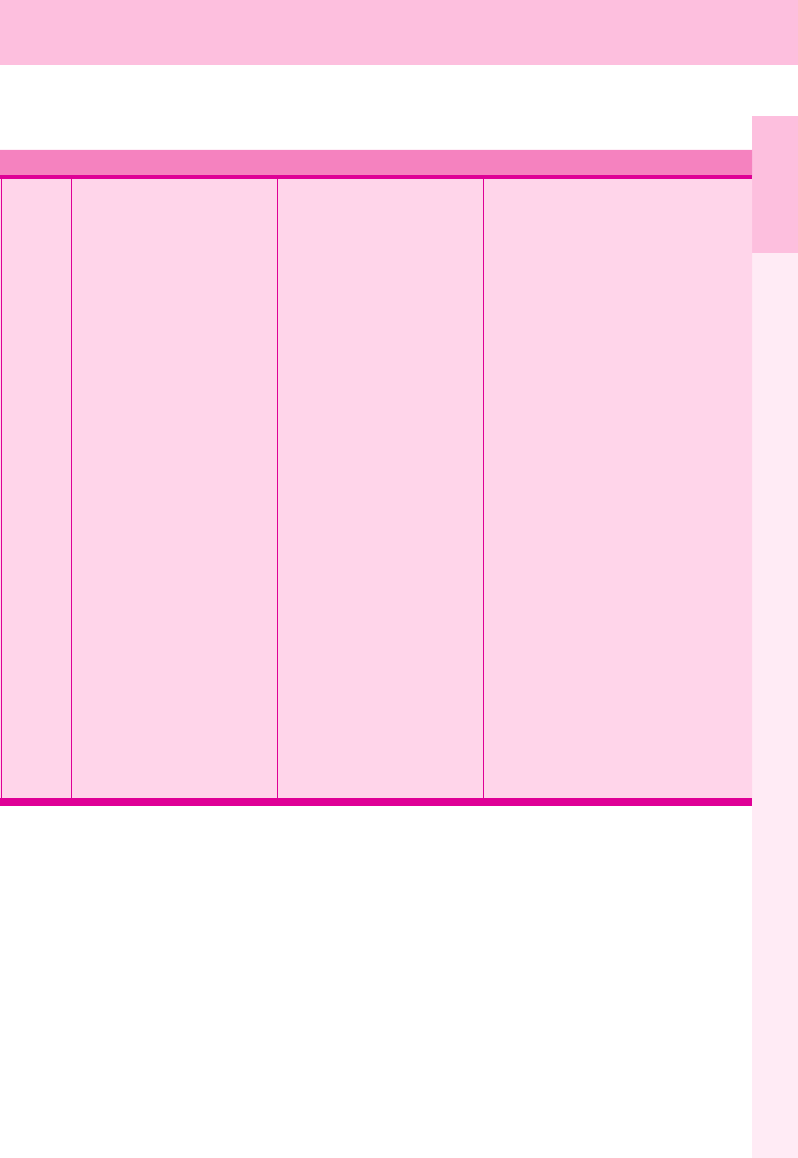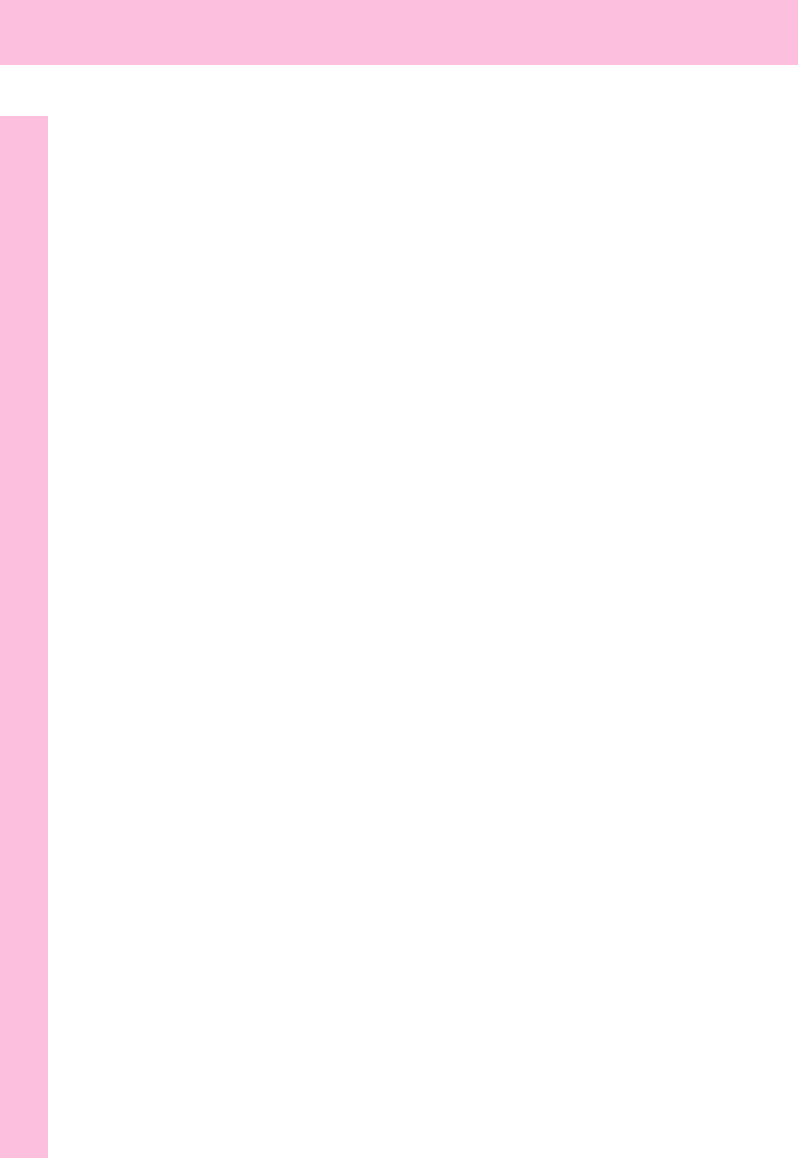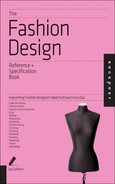
Book
ge:14
Job:12-29742 Title:RP-Fashion Design Ref and Spec Book
#175 Dtp:204 Page:15
001-019.indd 15 2/26/13 7:10 PM
Evaluation 15
(Text)
d
y
The tools and materials required for all facets of any fashion challenge, from concept through
construction and delivery, must be taken into account. Some are project speci c, while others
are a part of the overall needs of running a business. The list can be extensive and will con-
tinue to grow along with the scale of the business, but it begins with some fundamentals.
Materials and tools should serve the needs of the overall design goal and the project in hand.
A designer must avoid falling into the trap of acquiring tools without having a well-de ned pur-
pose for them. The right tool for the right job, however, is a smart investment, as it will often
save time in the long run and will usually produce a polished result.
01
Book
ge:14
Job:12-29742 Title:RP-Fashion Design Ref and Spec Book
#175 Dtp:204 Page:15
001-019.indd 15 2/26/13 7:11 PM

Job:12-29742 Title:RP-Fashion Design Ref and Spec Book
#175 Dtp:204 Page:16
001-019.indd 16 2/26/13 7:10 PM
16 THE FASHION DESIGN REFERENCE + SPECIFICATION BOOK
(Text)
THE CUSTOMER
At every point, fashion designers must ask themselves who they are serving. Many new
designers are misled by the fact that large fashion companies are often diversi ed and offer
products to multiple audiences. This broad designer presence in the market is usually the
result of a long period in business and the carefully planned development of individual off-
shoots. These branches of the business depend heavily on the success of the parent
company. The Donna Karan brand is a good example of a company that worked diligently
for many years to perfect the way it served its female customer before it began to offer
menswear collections.
D
of
o
w
at
O
h
m
b
INVENTORY OF FUNDAMENTAL TOOLS FOR THE FASHION DESIGNER
Art Patternmaking Construction
P
Graphite Pencils
Mechanical Pencils (for fine detail)
Designer Markers (chisel-tipped)
Watercolors (transparent)/gouache
(opaque)
Watercolor Brushes:
Round pointed size 8–10
Round pointed size 0–1
Round, flat-tipped
(for stripes and textures)
Waterproof Black Felt-tip Pens
Range of 4 sizes (0, 1, 3, 5)
Brush tip
Waterproof Black Ballpoint Pens
Colored Pencils (Artist/Designer quality)
White Colored Pencil or China marker
Pastel Pencils
Marker Paper
Bristol Board–Vellum Surface
Sketchbook
Drawing Board
Art Software
(Adobe Illustrator, Adobe Photoshop)
Scanner (large-format)
Presentation Portfolios
Adhesives
(Double-stick Tape, Masking Tape,
Glue Stick)
Fabric Swatches
Fabric Scissors
Paper Scissors
Dress Form
Muslin
Pins
Pencils
Dotted Paper
Oaktag Paper
Paper Scissors
Weights
Pattern Hooks
Hole Punch
Notcher
Awl
Tracing Wheel
Tape Measure
C-Thru Rulers
1" x 9" (2.5 x 23 cm)
2" x 18" (5 x 45.5 cm)
Yardstick
Hip Curve
French Curve
Sewing Machine
Overlock Machine
Buttonhole Machine
Hand Needles
Fabrics
Threads
Linings
Interfacing
Notions
Trim
Fabric Scissors
Rotary Cutter
Cutting Mat
Pressing Tools
Ironing Board
Iron
H
G
P
S
T
B
A
S
H
D
S
C
01
Job:12-29742 Title:RP-Fashion Design Ref and Spec Book
#175 Dtp:204 Page:16
001-019.indd 16 2/26/13 7:11 PM

Book
ge:16
Job:12-29742 Title:RP-Fashion Design Ref and Spec Book
#175 Dtp:204 Page:17
001-019.indd 17 2/26/13 7:10 PM
Evaluation 17
(Text)
Designers must narrow the customer eld or run the risk of not appealing to anyone. Instead
of declaring their customer to be twenty to fty years old, a designer might place the emphasis
on the need and desires of the thirty- ve-year-old woman. Serve that woman well and younger
women who connect with the signi cance associated with the thirty-something lifestyle will be
attracted, as will an older consumer who wishes to infuse her image with a younger message.
Once designers have identi ed the customers they want to address, they need to gure out
how to reach them. The direction of research and development now turns outward. Designers
must form a clear and detailed understanding of their target. Observations will be drawn from
both demographic and behavioral patterns.
Packaging Promotion Documentation
Hangers
Garment Bags
Poly Bags
Shopping Bags
Tissue Paper
Boxes
Address Labels
Shipping Service
Hang Tags
Designer Labels
Size Labels
Care Labels
Business Cards
Stationery
Web Authoring Software
(Adobe Dreamweaver,
Panic Software’s Coda)
Website
Website Host
Unique URL Address
Email Address
Logo Merchandise
Social and Professional Net-
working Services
Digital Camera
Digital Video Recorder
Video Editing Software
(Adobe Premiere, Avid,
Apple Final Cut Studio)
01
Book
ge:16
Job:12-29742 Title:RP-Fashion Design Ref and Spec Book
#175 Dtp:204 Page:17
001-019.indd 17 2/26/13 7:11 PM

Job:12-29742 Title:RP-Fashion Design Ref and Spec Book
#175 Dtp:204 Page:18
001-019.indd 18 2/26/13 7:10 PM
18 THE FASHION DESIGN REFERENCE + SPECIFICATION BOOK
(Text)
P
G
Th
b
h
A
fa
T
A
s
w
in
th
th
G
a
re
to
th
h
a
d
L
Ju
e
a
b
s
m
W
m
Demographics
Demographic research produces raw data, including such details as age, location, income,
profession, ethnicity, marital status, and number of children. This kind of information can
be purchased from large companies that specialize in such research, but will come at a high
price. The information can also be acquired on a smaller scale through more grassroots
efforts that survey the designer’s immediate community.
Psychographics
Although demographics generate a picture of the customer, it is merely an outline. For a more
nuanced understanding of the designer’s ideal target, the research needs to dig deeper. The
designer should want to know what a woman does for fun, whether she prefers to cook or eat
out, and any number of personal likes and dislikes that make her real in the designer’s mind.
No longer reduced to mere statistics, the customer can now be imagined as living in the de-
signer’s creations. All these considerations will be reflected in the designer’s work, which will
connect with the client in a meaningful way.
CULTURAL CLIMATE
What is happening at any given moment at the city, national, and global levels plays a role in
how a designer’s work is received. Politics, the economy, and world events become factors in
the perceived value of what a designer produces. Wartime and national tragedy have histori-
cally been powerful influences on the attitudes of those with purchasing power, both during
and after hard times. Following both World Wars, society responded with a celebration of
youth, as is evident in the flapper culture of the 1920s and the mod and hippie cultures of the
1960s. After 9/11 a strong focus on family and home life pervaded all sectors of design. The
current downturn in the economy has led some designers to forgo opulence and excess, and
others to embrace more optimistic neon colors.
Fashion designers must ask themselves whether they anticipate their ideas being accepted
or rejected because of current events and the influence of these events on public opinion.
Customers are only part of the equation. Also in play are how the designer’s employees are
affected and how the media will interpret a collection as it relates to the news of the day. De-
signers might even ask what kind of entertainment is being successfully served to the public.
For instance, are they looking to escape into fantasy, the way audiences in the 1930s turned to
Hollywood for a respite from the Great Depression?
01
Job:12-29742 Title:RP-Fashion Design Ref and Spec Book
#175 Dtp:204 Page:18
001-019.indd 18 2/26/13 7:11 PM

Book
ge:18
Job:12-29742 Title:RP-Fashion Design Ref and Spec Book
#175 Dtp:204 Page:19
001-019.indd 19 2/26/13 7:10 PM
Evaluation 19
(Text)
Pop references and celebrity obsessions have also become a part of the cultural mix. Elinor
Glyn coined the use of the word It as a euphemism for sex appeal and sass in her 1923 novel
The Man and the Moment. Four years later, when the actress Clara Bow appeared in the film
based on Glyn’s novel, the author dubbed her the “It Girl.” Since then every generation has
had its It Girl. Today, It Girls, It Boys, and It Products come and go at a much faster rate.
A fashion designer who gravitates toward popular culture now needs to ensure that the “it”
factor of their designs is not “so five minutes ago.”
THE MEDIA
A strong understanding of media outlets and their missions can lead to very fruitful relation-
ships for the fashion designer. Every successful newspaper, magazine, television show, and
website has carefully researched their audiences to present them with the message they want
in the style they want it. Designers who wish to be a part of that message must often tailor
their content to create a natural t. They must also nd the correct language to best capture
the essence of their work.
Great attention must be paid to the documentation of the designer’s body of work, both past
and present. Storytellers in the media will be looking for ways to weave tales relevant to their
readers or viewers. Personal histories also play an important role in the process. A family pho-
tograph of the designer as a child seated with his mother at a sewing machine might speak to
the inevitability of this career path, but equally an image could re ect the odds the designer
had to overcome to pursue her passion. Furthermore, any images, still or moving, that are
associated with the work must not only be on message but also re ect the aesthetic stan-
dards of the media outlet.
LOCATION
Just as in the world of real estate, location is one of the most important factors to in u-
ence how successful an endeavor will be. When it comes to fashion, designers must display
an understanding of the place (or the differences among the various locales) where they do
business. Urban settings often produce a taste for dark, somber palettes and professional
silhouettes. By the same token, customers living in an urban environment might also buy into
more provocative, even experimental designs when expressing themselves in social settings.
Weather, as it relates to certain regions, can help an aesthetic evolve. In warm tropical cli-
mates, bright colors and large-scale prints are integral to the culture in uencing fashion trends.
e
o
01
Book
ge:18
Job:12-29742 Title:RP-Fashion Design Ref and Spec Book
#175 Dtp:204 Page:19
001-019.indd 19 2/26/13 7:11 PM
..................Content has been hidden....................
You can't read the all page of ebook, please click here login for view all page.
